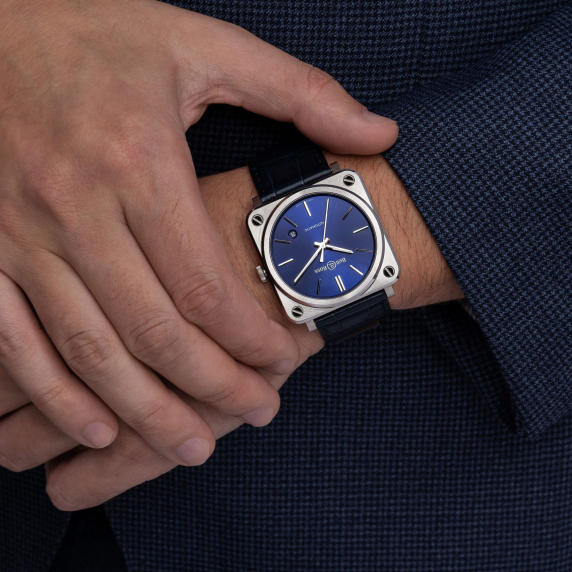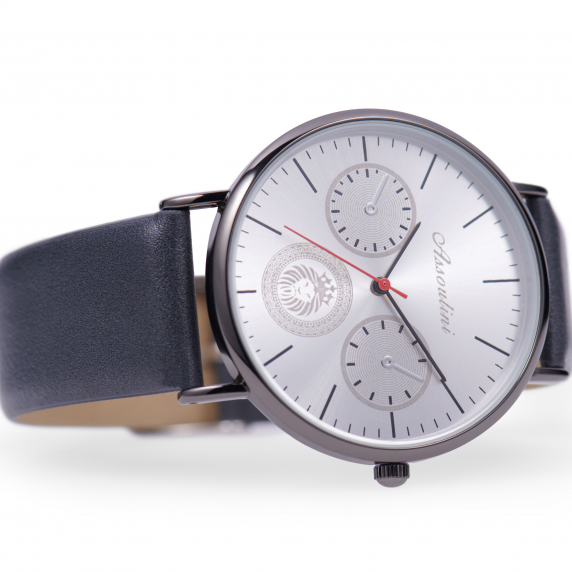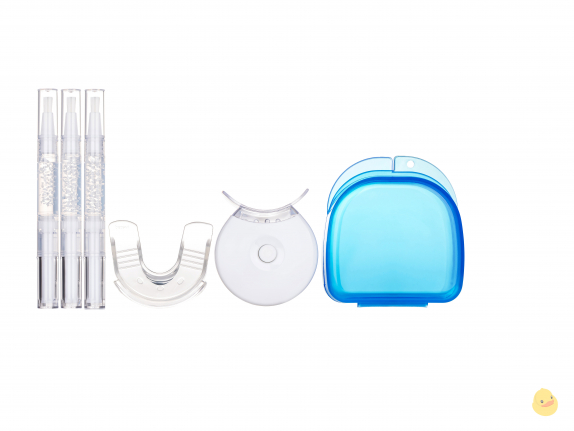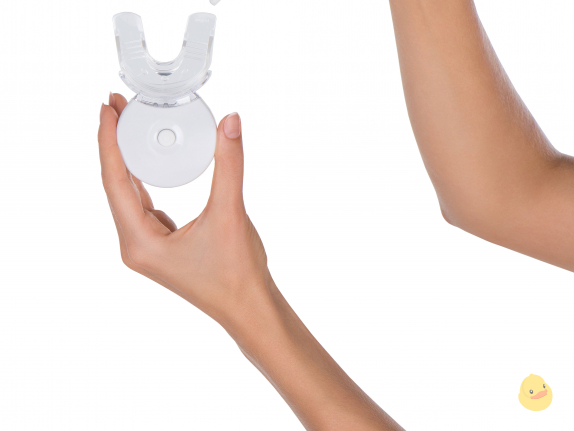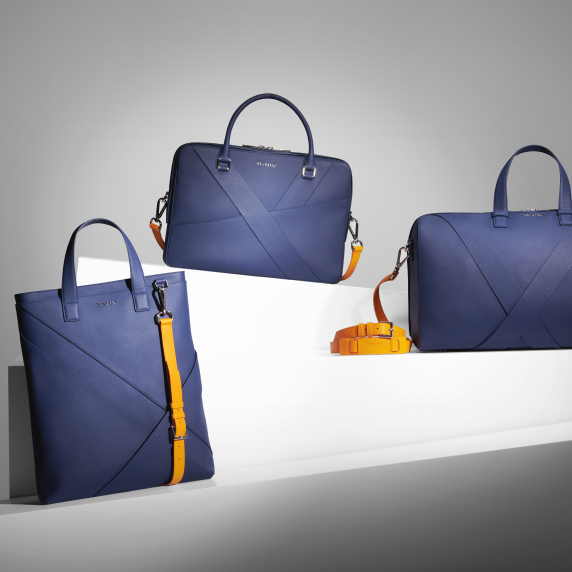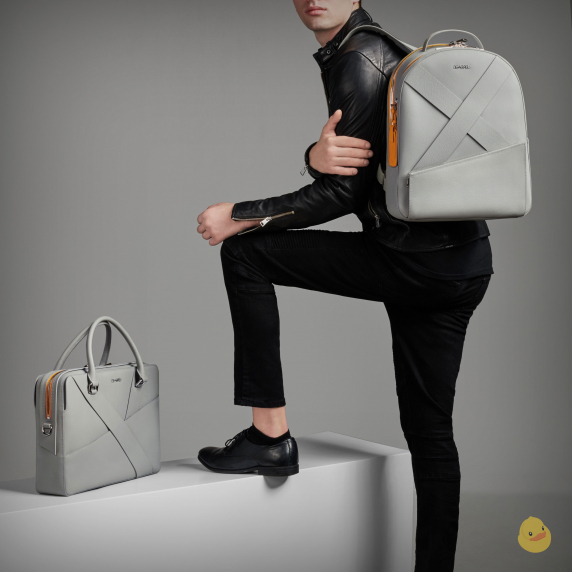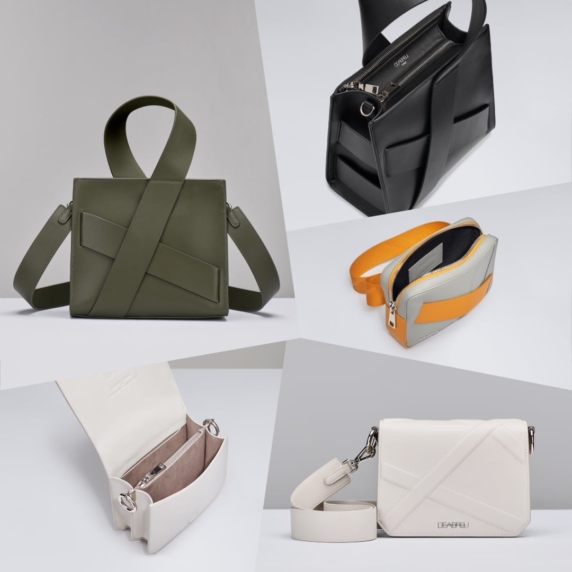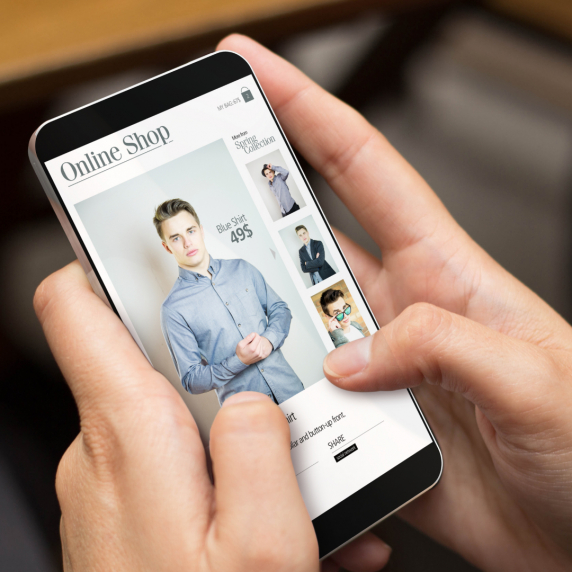Our Stories
Back to all storiesThe Ultimate Product Photography Style Guide for 2020
A great product photo isn’t a quick snapshot – it’s the result of using a dedicated product photography guide that outlines how to take a shot that converts browsing consumers into buyers. Get the low-down today with this guide to successful product photography in 2020
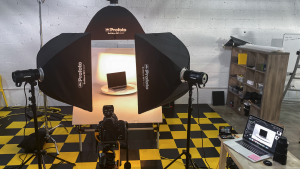
How Do Consumers View a Product Page and What Are They Looking For?
There’s a lot to do when it comes to building a successful ecommerce website! It might be simple to set up your product pages, but also taking the time to optimize them so that they sell is vital.
All this – and you’ll need great products that people want to buy, too!
That’s already a lot of back-breaking work, and we haven’t even touched on one of the most important elements of a fantastic product page: product page photos and photography. Humans are highly visual creatures, and online stores absolutely need great product images to overcome their virtual limitations. For ecommerce stores, that means having a product photography style guide.
While people can’t touch, feel, or even smell your products online, a gorgeous set of product photographs can give them all the visual information they need to make a purchasing decision.
In fact, 93% of consumers say that visual content is a key factor in that decision, and the quality of those images is the most important factor for 90%. Simply put, your customers want your photography to bring your products to life and seduce them.
In other words, when the typical consumer is looking for products online, they’re looking for a variety of things that signal that your ecommerce store is the right choice for them, with product photography being one of the most important elements.
But why, exactly, is product photography so important in this huge laundry list of ecommerce store optimizations? That’s a fantastic question, so we’ll get to that next!
Why Product Photography Increases Conversions
In one word: visuals. As we’ve already mentioned, humans are highly visual creatures. While it’s corny to say, “a photograph is worth a thousand words,” it’s also an apt aphorism.
According to 3M, our brains process visual content 60,000 times faster, and with half our brains dedicated to interpreting the world around us by sight, it’s no surprise that we make snap judgments based on what we see. Make no mistake about it, poor product photography will give 93% of peoplean immediate, instinctive negative reaction!
More than just having an attractive website that reflects a trustworthy brand, you need professional, high quality product images to engage and convert prospective buyers browsing through your store.
The better your product photography, the more value and quality people will associate with your brand. Great photos can take common objects and give them a new, desirable appeal. If you have your own brand guidelines for product photography, it’s a lot easier to build a brand image that sells products at the same time.
5 Golden Rules for Awesome Ecommerce Product Photography
– Use Alternative Photos – take images of a product from all angles, up close, and even 360˚– give buyers a real feel for your product and its details. 33% want to see multiple photographs, with a measly 0.52% happy with just one
– Give Context – take product photos that show your products in use, or in their natural environment to help unleash buyers’ imagination and enhance their desire to own your products
– Be Consistent – build a unique photography style guide that is in-line with your brand values for a consistent look across all your different product lines, with everything photographed in the same way
– Zoom In – allow buyers to zoom into your products to get a closer look at the smallest details with close-up product photography without having to squint their eyes
– Invest in Pros – Hiring professionals to take premium product photos save you time and money: remember, it’s not just taking pixel-perfect product photos, it’s also editing, retouching, and optimizing them, too
One important thing to note here is that your product photography should be accurate and honest. While artistic shots that make your products look gorgeous, but misleadingly so, can initially boost conversions, this short-term win is easily offset by negative, long-term losses as consumers feel duped.
Your ecommerce product photography needs to show your products as they do in your hand. Otherwise, you risk a slew of returns and angry, reputation-damaging reviews! Recent research from Weebly shows that almost a quarter of all returns are a result of misleading product photography. When it comes to creating your product photography style guide, this is something you will want to underline.
For this reason, many ecommerce stores choose to stick to one of two common types of ecommerce product photography, which is what we’ll discuss next.
The Two Types of Ecommerce Product Photography
When it comes to ecommerce product photography, there are two types of shots that every ecommerce store uses – and every ecommerce customer expects to see:
– The white background product shot
– The Lifestyle or contextual product shot
Both styles have their pros and cons. Deciding which style is best for you will largely depend on the types of products you are selling and the visual messaging that you want to get across to consumers on your ecommerce website.
In this section, we’ll cover the pros and cons of both styles. For most ecommerce businesses, a mix of the two product photography styles is ideal, which means that when creating your brand guide to product photography, you’ll need to consider your vision for how prospective customers will see your products online.
White Background Ecommerce Product Photography
PROS
– Promotes consistency
– Minimize clutter and distraction
– Highlights smaller details
– Emphasizes real colors
– Saves on editing time and costs
– Can be used on third-party ecommerce
CONS
– Not optimized for social media
– Can feel boring, even ‘lifeless’
– Lacks creativity
When it comes to ecommerce, the white background photo is king. Showcasing your product on a pristine white canvas with perfect lighting makes every little detail stand out while ensuring a consistent look across your catalog the easy way. Need to edit your photo or use it elsewhere? The crisp contrast between product and background makes snipping the product out and inserting it into more exciting backgrounds easy.
As a bonus, if you’re also leveraging third-party websites such as Amazon, Google, or eBay to sell your products, high quality, professional ecommerce white background photos are universally accepted as the optimal format.
For all these reasons, it’s no wonder that white background photography is the most common type used in ecommerce. Why change a winning formula that has been tested and proven, time and time again?
However, they’re not perfect – if you want to share these images on social media, they won’t get much attention unless you edit them into interesting or creative scenes, and there’s no denying that they’re, well, a little bit boring!
This is where lifestyle and contextual product photography comes into its own.
Lifestyle and Contextual Ecommerce Product Photography
PROS
– Shows the context of use
– Gets more attention
– Social media ready
– Can showcase brand identity
– Display benefits more clearly
– Show size or scale of product
CONS
– Hiring models can be costly
– Organizing location shoots takes time
– Can distract people from product
– Unsuited for some product types
– Can feel cluttered or ‘busy’
Lifestyle shots are perfect for storytelling, which makes them a perfect fit for social media and multichannel marketing through your email, blog posts, and other collateral. They’re also a great way to add more context to your product pages alongside white background product photography.
The biggest issues here for ecommerce business are typically the increased cost of hiring models and going on location. Something as simple as a spell of bad weather can ruin a well-planned shot and delay it.
It’s also important to remember that while you can really show off your creativity here, you also need to stay focused on the product and keep it at the front of the photograph. A lifestyle product with too much action in it can feel cluttered and distract consumers from the message you’re trying to deliver.
Finally, it’s worth remembering that not all products are suited for lifestyle photography, particularly technical components or other utilitarian products, where the features and smaller details of the product matter more.
Basic Product Photography Equipment and Processes
Taking superb product photography by yourself can seem daunting at first, but if you build a product photography style guide and optimize it, you can quickly build a consistent catalog of photos on your own.
Many people ask if smartphones are good enough for product photography. While we’ll always maintain that dedicated cameras and equipment are better, it isn’t impossible. In this section, we’ll cover creating a basic set up with a smartphone camera for smaller products.
Ideally, your smartphone camera should be a 50MP (megapixel) camera, and you should consider purchasing a 100mm lens like the [recommended product] together with a tripod for stability.
You’ll also want a shooting chair and some white craft paper. This will enable you to set up a basic white background shot. Clip the paper to the chair and position it near a window for natural lighting. With the set ready, you can now start taking product photos.
This lighting won’t always be ideal, so you will want to get white cardboard or plasterboard to reflect and manipulate the light to your liking. One key rule to remember here is that too much light is better than too little, as it’s easier to minimize sunlight than enhance it.
On a similar note, don’t shoot under direct sunlight, as this will add harsh shadows to your product photo. While a lot of sins can be covered up in post-production with editing software, it takes time to master – and a poor starting image will make this job even harder.
Getting a basic photography set together isn’t hard, but you may find yourself devoting a lot of time to the editing process to get the photos just right, taking you away from other business activities. Over time, you may also find yourself spending money on training, software, and equipment to produce better product images.
For this reason, many ecommerce businesses work with professional photographers rather than create an in-house photography department. Professional product photographers not only have the equipment and processes in place, but also the experience to deliver high quality shots on time and within your budget.
While DIY photography offers a quick starting point for the lowest of budgets, it’s worth looking around at pricing to find a more time- and cost-effective way to achieve your product photography goals so you can focus on growing your ecommerce business.
How to Create Product Photography Guidelines
When you are creating your product photography style guide, you’re looking beyond the technical aspects and equipment used into three important artistic ideas: your brand look, what makes it unique, and how to maintain product photo consistency.
Things you’ll want to consider include:
Identify Your Brand Style
What image do you want to project when it comes to your brand? If you’re not sure, look at your target market and think about what they want to see from your brand. Whatever you’re selling, your photography and branding need to appeal to them.
Research Other People’s Photo Style Guidelines
If this is your first time creating a photography style guide, then this should be your very first step. There’s no need to reinvent the wheel here: looking at what other brands are using as a style guide is a great place to get ideas for your own brand style as well as providing you with inspiration and ideas to add to your own.
Identify Your Product Photography Style
How many photos does each product need, and is there a specific sequence of shots required? Creating a consistent sequence of angles, distances, and details creates a consistency that can be repeated across your catalog, especially if you’re selling products that are largely similar, such as jewelry or clothing.
Know Your Visual Style
Closely related to the last point, you need to know what visual information each shot should give. The more guidelines in your style photography guide, the better for consistency and control of that style. Consider the message that you want to put across with photos. This visual style can be as detailed as you like; if you sell shirts, for example, you may want to specify that they should only be shot with buttons done up.
Provide Instructions for Technical Details
You may have a preferred file name structure: add this to your photography style guide. In addition to this, if you have very specific needs – for example, you may prefer a certain lighting color – then add this, too. These small details are often forgotten but can save you a lot of wasted time and money in the long run.
Keep Your Photography Style Guidelines Clear
Your guide to product photography shouldn’t be a huge book packed with dry, technical details – it should be a concise document that anyone can easily follow and implement. Your aim with a guide to product photography is to help people to take creative shots that align with your brand’s vision, after all. Why make it complicated?
Creating a product photography guide makes it easy for you to take consistent photographs and is also a useful resource to provide to professional photographers you want to hire.
Remember: your product photography is all about the first impression that people will have of your product. What message do you want to send out? This is the question that your brand photography style guide should answer so that anyone can take a professional product photo that achieves this.
Optimizing Your Ecommerce Product Images for SEO
When it comes to world-class product photography for ecommerce, your high quality, beautiful shots need some SEO brains behind them to take them to the next level. As such, it’s something you’ll want to consider when building out a brand guide to product photography.
One of the first things you’ll want to do is ensure that your photographs are optimized for fast load times – a slow load rate kills your conversion rates. Just ask Amazon, who discovered as early as 2012 that making consumers wait just one more tiny little second cost them $1.6 billion.
Yikes!
While you’re unlikely to lose billions of dollars from slow-loading product images, your bottom line willsuffer. After all, people are busy and impatient, and tardiness is a surefire way to make sure they bounce, never to be seen again.
Beyond speedy load times, you’ll also want to ensure that your product photo files have optimized names that use keywords, as well as optimizing the hidden metadata and alternative descriptions.
Want to find out more about product photo SEO and discover some easy tweaks to help you speed through this tedious but necessary process? Yellow Duck Works has got you covered with an article that shows you some quick-fix tips to boost your existing product photography SEO today.
Ultimately, optimizing your ecommerce product photography for Google SEO isn’t rocket science; it’s simply a case of making sure the images load fast and are packed with keywords in all the relevant fields.
Frequently Asked Product Photography Questions
Q: Are there only two types of product photography?
A: Broadly speaking, yes: white background photography and lifestyle photography covers most ecommerce business needs, but there are some other styles.
Group shots put a connected group of products together, while packaging shots focus on product packaging more than the product itself. There are also scale shots and detailed shots, both of which help consumers get a better idea of the size of the product and its finer features.
Q: Do I really need to create a product photography guide?
A: For consistent results, this is essential. However, you may be too busy running a business to create an effective guide; in this case, it’s worth considering hiring photography professionals who can do all this heavy lifting for you and deliver a gorgeous set of product images that help you to sell more products at the end!
Q: Won’t hiring a professional ecommerce photographer cost a lot of money?
A: Like any other service industry, different photography studios have different rates that reflect their experience and the complexity of the job. The very best can easily cost you a cool $10,000 a day – but amateur photographer rates can start at just $25 an hour. Most professionals charge between $200 to $500 an hour.
Q: What equipment should I use if I want to take my own product photos?
A: A good camera, bright lights, a clean white background, a table, and a sturdy tripod are the essentials for taking basic photos. However, this is just the bare minimum; if you’re looking for lifestyle shots, you’ll also need to find models and locations while dealing with any red tape.
For more advanced photography and better, more consistent results across your product lines, you’ll need access to the right editing tools and the experience to edit and retouch photos skillfully. While this is achievable for a small catalog, things can quickly get overwhelming with larger ones!
Got any other questions that you can’t see answered in this article? Contact us today for expert advice!
Conclusion: Building a Project Photography Guide Isn’t Hard
…But you do need to understand the best processes and conventions that go into making an effectivephotography product guide template that enables you to consistently take great product photography.
In this article, we’ve explained how product photography is one of the key factors in converting browsing consumers and covered various things you should take into consideration when building your own guide to product photography and style. Implementing this will help you to present a more consistent, professional, and trustworthy brand image while also showcasing your products in their best light.
If you’re planning to build an in-house photography studio and team, then taking these factors into consideration will help you to set up everything the right way. You also now have a good understanding of the behind-the-scenes work and photographic optimization that goes into making brilliant ecommerce photography look as simple as a quick snap.
However, for most ecommerce businesses, it is typically more cost-effective and less time-consuming to hire a professional ecommerce photographer who will already have the tools, expertise, and photography style guides in place to create optimized product images for your ecommerce store.
Ultimately, you will need to consider your own budget and ongoing needs to make the right decision for your ecommerce business. There’s no right or wrong way to do this, and choosing one way for now doesn’t mean that you can’t change paths later as your budget and requirements change.
Get Professional Ecommerce Product Photography Today
Yellow Duck Works is a specialist service that provides high quality product photography for ecommerce business, with a team that is focused on delivering beautiful product images that boost your sales and sweeten your bottom line.
Whatever your needs, get in touch with us to discover how we can help you to create picture-perfect ecommerce photography that puts you ahead of your fiercest niche competitors,
Wondering how much our premium product photography costs? Check out our simple, easy-to-understand photography charges to get a ballpark quote in seconds. If you’re ready to start optimizing your ecommerce store with great product images, then contact us today by filling out the contact form.
